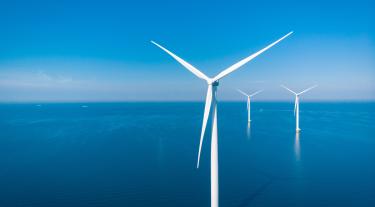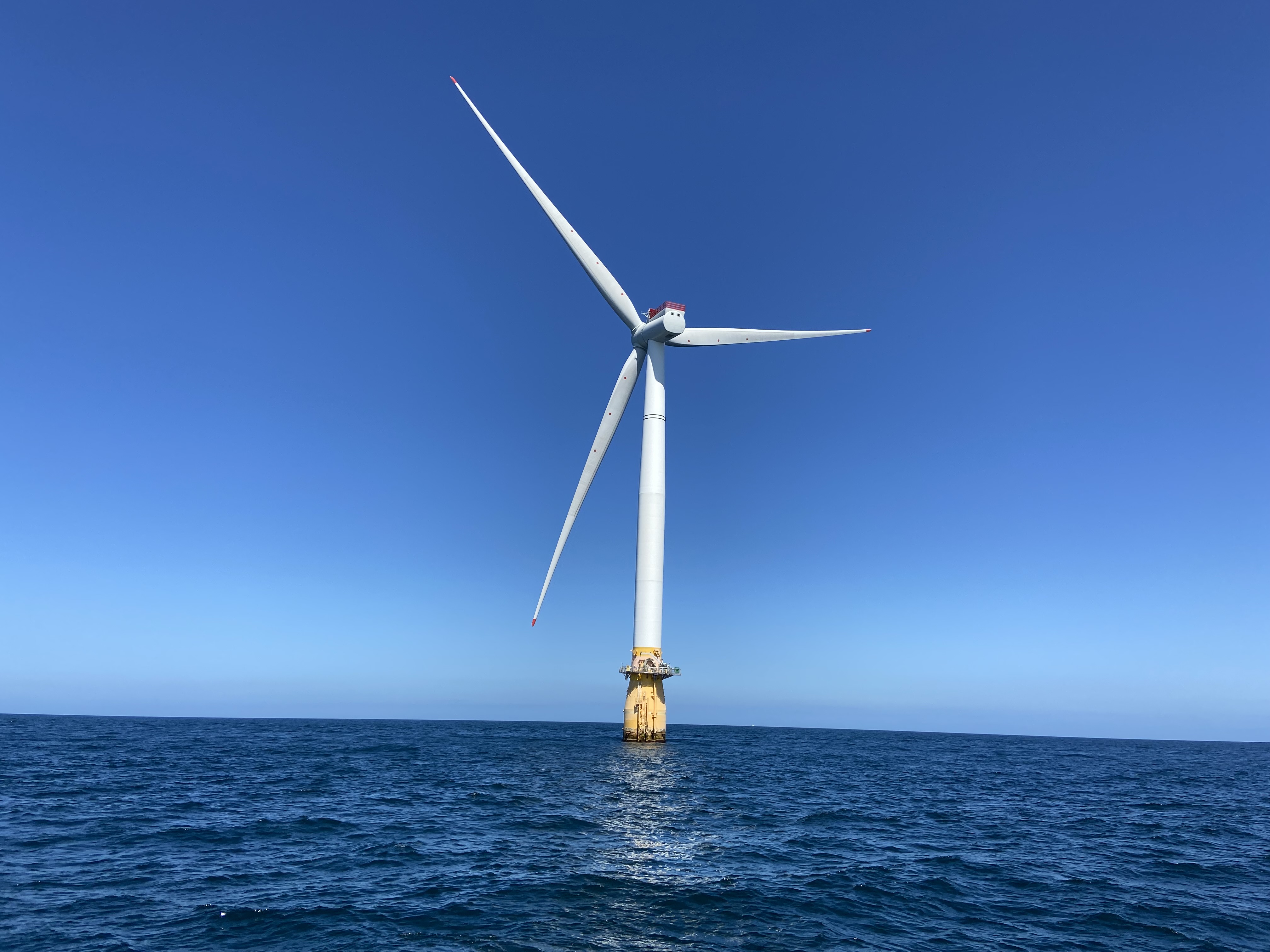- A first-of-a-kind methodology to standardise offshore wind farm carbon footprint measurement has been published today.
- The methodology increases transparency on how carbon emission calculations should be carried out, allowing developers to better understand and reduce the carbon impact of their projects.
- The methodology is a collaboration between The Carbon Trust and twelve SUS JIP industry partners — representing around a quarter of installed wind farm capacity globally.
A first-of-a-kind methodology to standardise how the carbon footprint of an offshore wind farm is measured has been published today by the Offshore Wind Sustainability Joint Industry Programme (SUS JIP). The collaborative initiative aims to help the global offshore wind industry scale up as sustainably as possible to meet global Net Zero targets by 2050.
This new methodology is a key first step in the delivery of commitments made by many offshore wind developers to reduce emissions and will improve the transparency of carbon emission data increasingly required by regulatory bodies.
The methodology will enable more accurate and standardised assessments of carbon footprints across the full lifecycle of offshore wind developments. It is applicable to fixed-bottom and floating offshore wind, whether prospective, operational, or at any other stage of their lifecycle. It also has the potential to support carbon emission transparency on offshore wind projects, facilitating action on non-price criteria following recent changes to many international offshore wind auction requirements.
The Carbon Trust collaborated with twelve SUS JIP industry partners — representing around a quarter of installed wind farm capacity globally — to devise the methodology. These include bp, EnBW, Equinor, Fred Olsen Seawind, Parkwind, Orsted, RWE, ScottishPower Renewables, Shell, SSE Renewables, Total Energies, and Vattenfall. The methodology also received input from several international research bodies, public bodies, industry, and wind trade associations as part of a consultation process.
The methodology is available to any offshore wind industry stakeholder, such as supply chain companies, consultants and developers involved in measuring the carbon impact of an offshore wind project, including the electricity generated and delivered to the grid. It provides a breakdown of how the carbon footprint can be calculated for all activities related to the material extraction, manufacturing, construction, installation, operation, decommissioning and end-of-life of the core infrastructure.
Crucially, the methodology increases transparency on how carbon emission calculations should be carried out, increasing the comparability of the results and enabling the identification of emission hotspots. This information can then be used to identify hotspots and plan ways to reduce the carbon intensity of different areas of the development.
The SUS JIP partners will use this methodology to support the standardisation of carbon emissions reporting. All twelve developers strongly encourage their networks and supply chains to refer to this publicly available methodology and are keen to have continuous partner engagement on this topic.
Mary Harvey, Programme Manager for SUS JIP from the Carbon Trust, said:
"The offshore wind industry plays a crucial role in the transition to a decarbonised future, as the demand for low carbon energy continues to grow. This new methodology enables the industry and its stakeholders to standardise how carbon emissions are measured across operations.
“Having transparent data on the carbon footprint of offshore wind farms is a game-changer. It allows developers to better understand and reduce the carbon emissions of their projects, while giving investors the ability to make informed, side-by-side comparisons between developments."
Luke Patruno, Business Development Manager – Sustainability at EnBW said:
“At EnBW, we're embarking on a transformative journey of renewal, pioneering a climate-neutral and equitable future for energy. Committed to decarbonising our supply chains, we proudly support the new methodology developed by the Offshore Wind Sustainability Joint Industry Programme (SUS JIP) and led by the Carbon Trust. This standard enhances the accuracy and consistency of carbon footprint assessments across the entire lifecycle of offshore wind projects, helping us increase transparency, identify emission hotspots, and implement effective reduction strategies.”
Øystein Kolstad, Subject Matter Expert Sustainability for renewables in Equinor said:
“For Equinor it is important to contribute to the further industrialisation of offshore wind, and as a company we are working to improve the sustainability performance in all our supply chains. The Offshore Wind Industry Product Carbon Footprinting methodology will increase transparency, strengthen emission reduction measures and provide more trustworthy carbon accounts in the industry”.
Lars Bender, CEO of Fred. Olsen Seawind said:
“Collaborating with our industry peers to address common challenges to OSW development is an important focus for Fred. Olsen Seawind. This agreed methodology will support decarbonising the offshore wind supply chain whilst promoting a greener supply chain. This is, not only important for ensuring a sustainable delivery of offshore wind, but also for ensuring an increased scale and pace of that delivery in line with ambitious global capacity targets.”
Jochem Vermeir, R&D Manager, Parkwind said:
“For Parkwind, sustainability is at the core of our mission to deliver clean energy. We are proud to support the new industry-wide methodology developed by SUS JIP and the Carbon Trust, as it provides a critical tool for accurately assessing and reducing the carbon footprint of offshore wind projects. By fostering transparency and standardization, this initiative empowers us and the entire industry to identify key opportunities for emission reduction, driving forward our commitment to a carbon-neutral future and helping meet global Net Zero targets."
Ida Krabek, Head of Global Sustainability at Ørsted said:
“At Ørsted we’re proud to be one of the initiators of this new methodology as standardisation is key to secure efficient supply chain decarbonisation and drive our industry towards Net Zero. A joint framework will support developers in working consistently with reducing emissions whilst enhancing transparency for customers and investors and preparing to meet future legislation. The methodology is a testament to how we can drive impactful progress on sustainability in the offshore wind industry when we collaborate.”
Volker Türk, Head of Sustainability RWE Offshore Wind said:
“Sustainability continues to be a cornerstone in RWE’s offshore wind build-out. Globally, we are investing over 55 billion euros by 2030 in our growing green strategy, which underpins RWE’s commitment towards achieving Net Zero GHG emissions by 2040. However, we can’t do it alone, and so we are delighted to be working in collaboration with peers across the sector through the Carbon Trust to take this forward. This methodology, established in partnership, is a great starting point for supporting transparency and standardising the way the offshore wind industry calculates the carbon footprint of projects and assets. We look forward to building on it and jointly with our partners unlocking further decarbonisation options for our portfolio.”
Christie Paterson, Senior Sustainability Manager at ScottishPower Renewables said:
“We’re delighted to have contributed to the development of this guidance and are committed to adopting it as a core component of the Iberdrola offshore renewables sustainability strategy. As we pursue our ambitious decarbonisation targets for our offshore windfarms, we believe this standard methodology will play a vital role in enhancing carbon calculation practices across the entire offshore wind industry, driving more sustainable outcomes.”
Kate Wallace Lockhart, Head of Sustainability, SSE Renewables said:
"When it comes to decarbonisation, focus has to be on materiality, credibility and transparency. The SSE Renewables Net Zero Transition Plan sets out our clear decarbonisation targets across all emission scopes and, even more importantly, our action plan to get there. The Carbon Trust’s Sustainability Joint Industry Partnership is a perfect example of how collaboration can accelerate action, with a group of competitors finding their shared values and ambition, to come together as a community and push for industry change. By working together to establish a common methodology, we can focus on carbon hotspots and carbon reduction in the most cost-effective way for energy consumers, investors and suppliers. And by making this toolkit and methodology open access, we hope to bring others on this journey to a net zero renewables sector too."
This programme is the fifth addition to the Carbon Trust’s renewable energy innovation platform, which consists of a portfolio of R&D activities including the Offshore Wind Accelerator (OWA), the Floating Wind Joint Industry Programme (FLWJIP), the Integrator and the Offshore Renewables Joint Industry Programme (ORJIP).





